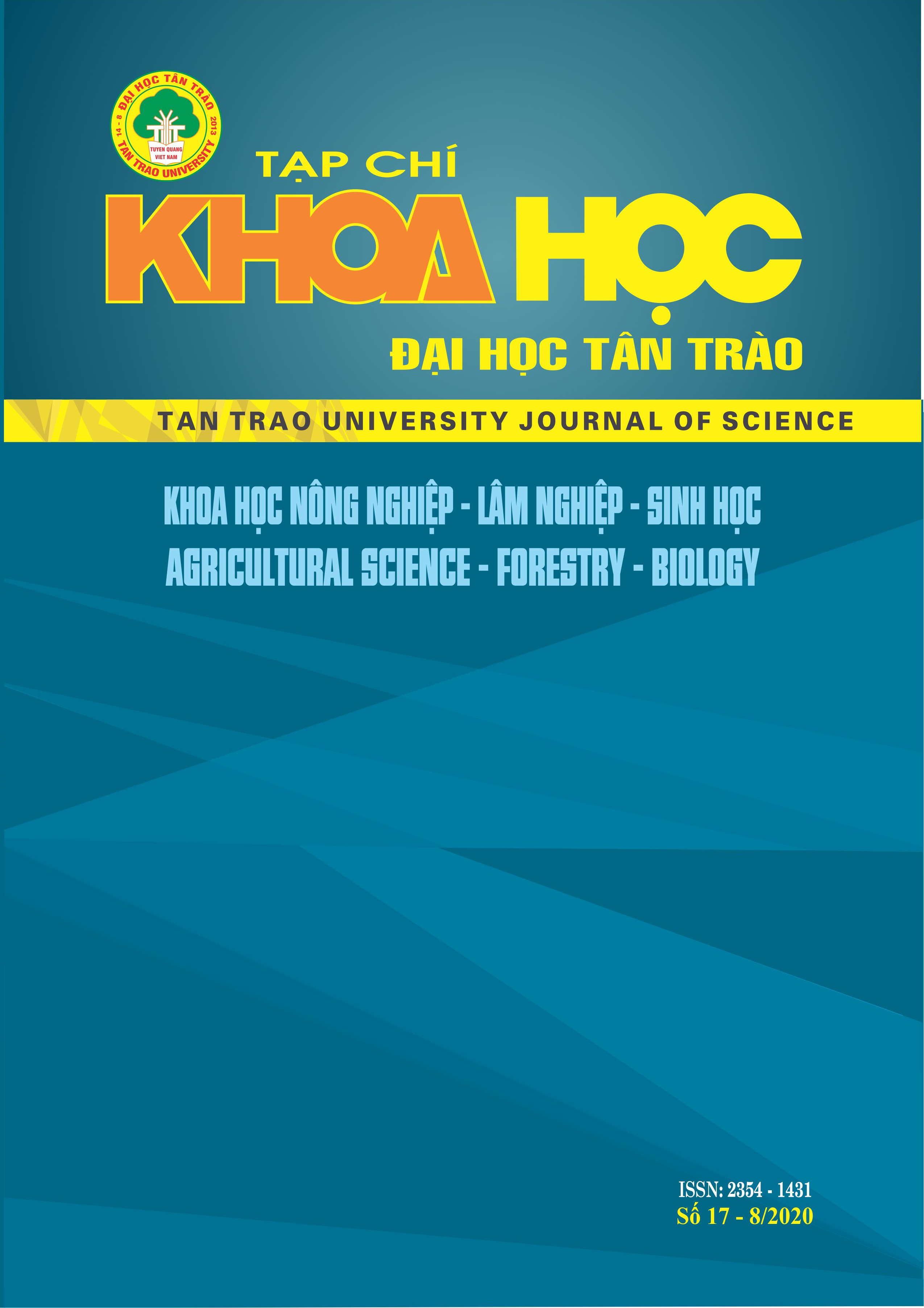Study on the medium of propagation Morinda officinalis How by tissue culture
DOI:
https://doi.org/10.51453/2354-1431/2020/391Keywords:
Morinda officianalis How, Breeding mediumAbstract
Morinda officinalis How is a valuable medical plant in traditional medicine. The tuber of the Morinda officinalis How is widely used as a medicinal effect for tonic kidney, tonic kidney, strengthen tendons, increase resistance, toughness, reduce rheumatism. The extract of Morinda officinalis How has the effect of reducing blood pressure, quickly acting on the functional glands, improving the brain, helping to eat and sleep well (Li et al., 2003).
To meet the source of high quality, bulk, it is necessary to have a fast, industrial-scale propagation method, so we have studied the medium of Morinda officinalis How propagating the plant by using the tissue culture method. The results of the study showed that: The suitable medium for the rapid multiplication of Morinda officnalis How was MS + 3.5 mg/l BAP + 0.2 mg/l IBA + 10 mg/l Riboflavin + 30 g/l sugar + 5 g/l agar, shoot factor multiplier reaches 10.14 times. The appropriate medium for rooting is 1/2MS + 0.3 mg/l IBA + 30 g/l sugar + 5 g/l agar + 0.4 g/l coal activated, rooting rate reached 100% and the average number of roots reached 3.44 roots / shoot. Survival rate at the nursery reached 95.20%.
Downloads
References
1. Bui Thi Huong Phu (2012), Propagation of Bacon (Morinda officinalis How) by tissue culture method in Quang Ninh.
2. Hoang Thi The, Nguyen Thi Phuong Thao, Ninh Thi Thao, Nguyen Thi Thuy (2013). The process of in vitro propagation in vitro (Morinda officinalis. How). Journal of Science and Development, vol.11, number 3.
3. Nguyen Chieu, Nguyen Tap (2007), Ba Kich, support project specialized in NTFPs of Vietnam, Publisher: Labor.
4. Vo Chau Tuan, Huynh Minh Tu (2010), Research on propagation of baum (Morinda officinalis. How) by tissue culture method. Journal of Science and Technology, University of Da Nang, No. 5 (40).
5. Li YF., Gong DH., Yang M., Zhao YM., Luo ZP. (2003). Inhibition of the oligosaccharides extracted from Morinda officinalis, a Chinese traditional herbal medicine, on the corticosteron induced apoptosis in PC12 cells. Life Science, 72: 933-942
Downloads
Published
How to Cite
Issue
Section
License

This work is licensed under a Creative Commons Attribution-ShareAlike 4.0 International License.
All articles published in SJTTU are licensed under a Creative Commons Attribution-ShareAlike 4.0 International (CC BY-SA) license. This means anyone is free to copy, transform, or redistribute articles for any lawful purpose in any medium, provided they give appropriate attribution to the original author(s) and SJTTU, link to the license, indicate if changes were made, and redistribute any derivative work under the same license.
Copyright on articles is retained by the respective author(s), without restrictions. A non-exclusive license is granted to SJTTU to publish the article and identify itself as its original publisher, along with the commercial right to include the article in a hardcopy issue for sale to libraries and individuals.
Although the conditions of the CC BY-SA license don't apply to authors (as the copyright holder of your article, you have no restrictions on your rights), by submitting to SJTTU, authors recognize the rights of readers, and must grant any third party the right to use their article to the extent provided by the license.


